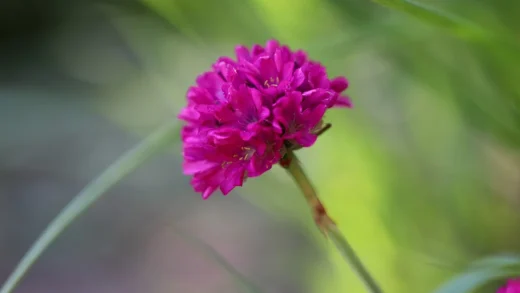As the vibrant colors of summer fade and the crisp air of autumn settles in, the focus of the gardener shifts from nurturing blooms to preparing plants for the challenges of winter. For Asiatic lilies, this period of dormancy is a crucial phase in their annual life cycle. Proper winter care, or wintering, is not merely about survival; it is about protecting the bulb and ensuring it has the resources and protection needed to emerge with vigor and produce another spectacular floral display the following spring. Understanding how to guide your lilies into and through their winter rest is a fundamental skill for any lily enthusiast.
The wintering process begins in the autumn, long before the first snowfall. As the days shorten and temperatures drop, the lily plant naturally begins to prepare for dormancy. The foliage, having spent the post-bloom period photosynthesizing and sending energy down to the bulb, will start to turn yellow and then brown. It is essential to allow this process to happen naturally. Do not be tempted to cut the foliage back while it is still green, as you would be depriving the bulb of the vital energy it needs to survive the winter and fuel next year’s growth.
Once the foliage has completely died back and can be easily pulled away from the ground, it is time to tidy up the lily bed. Cut the remaining stems down to about one to two inches above the soil line. This step is important for garden hygiene. Removing the dead plant debris helps to reduce the chances of fungal spores and pest eggs overwintering and causing problems in the spring. A clean garden bed heading into winter is the first line of defense against future disease and pest issues.
The hardiness of Asiatic lilies is one of their most celebrated traits. They are typically hardy in USDA zones 3 through 9, meaning they can withstand quite cold winter temperatures without needing to be lifted from the ground. The bulb’s ability to survive is dependent on it being in a dormant state, where its metabolic processes slow down significantly. The primary goals of wintering are to protect the bulb from extreme temperature fluctuations and to prevent it from sitting in cold, waterlogged soil, which is a sure recipe for rot.
For lilies planted in the garden, the soil itself provides a significant amount of insulation. However, in colder climates (generally zone 5 and colder), or in areas with inconsistent snow cover, adding a layer of winter mulch provides crucial extra protection. Snow is an excellent natural insulator, but when it is absent, the soil is exposed to freezing winds and repeated freeze-thaw cycles. This heaving action of the soil can damage the bulb’s roots or even push the bulb up towards the surface, exposing it to lethal cold.
More articles on this topic
Applying winter mulch
The application of winter mulch is a critical step in protecting in-ground Asiatic lilies in colder regions. The purpose of the mulch is not to keep the ground warm, but rather to keep it consistently frozen once the winter cold has set in. This prevents the damaging freeze-thaw cycles that can disrupt the bulb’s dormancy and harm its roots. The timing of the mulch application is therefore very important. You should wait until after the ground has frozen, typically after the first hard frost of the season.
If you apply the mulch too early, while the ground is still warm, you can trap that warmth and moisture. This can create an environment that is too cozy for the dormant bulb, potentially encouraging it to rot or attracting rodents like mice and voles, who are looking for a warm place to nest and a convenient food source for the winter. Patience is key; wait for nature to signal that winter has truly arrived before tucking your lilies in.
A good winter mulch should be light and airy, allowing for some air circulation while still providing insulation. Excellent materials for this purpose include shredded leaves, straw, pine needles, or marsh hay. Apply a generous layer, about four to six inches deep, over the entire area where the lily bulbs are planted. This protective blanket will help to moderate the soil temperature throughout the winter months, providing a stable environment for the dormant bulbs.
In the spring, as the weather begins to warm and the threat of a hard frost has passed, the winter mulch needs to be removed. Rake the mulch away carefully, trying not to damage the delicate new shoots that may be just starting to emerge. Removing the mulch allows the sunlight to reach and warm the soil, which encourages the lilies to break dormancy and begin their spring growth. Leaving the mulch on for too long can delay growth and create a damp, shady environment that is attractive to slugs and snails.
More articles on this topic
Wintering lilies in containers
Growing Asiatic lilies in containers requires a different approach to winter care compared to those planted in the garden. The soil in pots is exposed to the cold air from all sides, making it freeze much faster and more solidly than the ground. This can be fatal to the bulbs, even for cold-hardy varieties. In most climates where the winter temperatures regularly drop below freezing, you cannot simply leave your potted lilies outdoors and unprotected. The bulbs are unlikely to survive.
One of the most reliable methods for wintering container-grown lilies is to move them into a cold but protected location. An unheated garage, a basement, or a cold shed are all excellent options. The location should be cold enough to keep the bulbs dormant but should not drop to extreme freezing temperatures. The goal is to mimic the stable, cold conditions of being underground. Before moving the pot indoors, allow the foliage to die back naturally and cut it down, just as you would for garden lilies.
During their winter storage, the potted lilies will need very little water. The soil should not be allowed to become completely bone-dry, but it should also not be wet. A very light watering once a month is usually sufficient to keep the bulbs from desiccating. Overwatering is a far greater risk than underwatering during this dormant period, as it can easily lead to bulb rot. Simply check the soil periodically and provide just a splash of water if it feels excessively dry.
In the spring, once the danger of hard frost has passed, you can bring the container back outdoors. As the soil warms and the new shoots emerge, you can resume your normal watering and care routine. Another option for those in moderately cold climates is to sink the entire pot into an empty space in a garden bed for the winter. The surrounding soil will provide insulation for the pot. You can then cover the area with winter mulch for extra protection, just as you would for your other in-ground plants.
Special considerations and final preparations
As part of your final autumn preparations, it is a good idea to mark the location of your lily clumps, especially if you have a large garden or are prone to forgetting where things are planted. A simple stake or plant label can prevent you from accidentally digging into your dormant bulbs in the early spring when you are eager to start planting other things. This small step can save you from a lot of frustration and potential damage to your prized lilies.
Good drainage remains a critical factor, even in winter. Before the ground freezes, ensure that the area where your lilies are planted is not in a low spot where water is likely to collect and turn into ice. Poor winter drainage is one of the biggest threats to lily bulbs. If you notice that water puddles in your lily bed after an autumn rain, it may be a sign that you need to improve the drainage or consider moving the lilies to a better location in the spring.
While Asiatic lilies are generally very cold hardy, some of the more exotic or specialized lily varieties may have different hardiness levels. Always be aware of the specific needs and hardiness zone rating of the lilies you are growing. If you are pushing the limits of a particular variety’s cold tolerance, providing extra winter protection is always a wise precaution. It is better to be safe than to risk losing a beautiful and valued plant.
Ultimately, the process of wintering your Asiatic lilies is about providing them with a safe and stable environment in which to rest. By taking a few simple steps in the autumn—cleaning up the foliage, applying a protective layer of mulch, and ensuring proper drainage—you are setting the stage for their successful return. This period of dormancy is not an end, but a necessary pause that allows the bulb to recharge, ready to burst forth with renewed energy and color when the warmth of spring arrives.


















